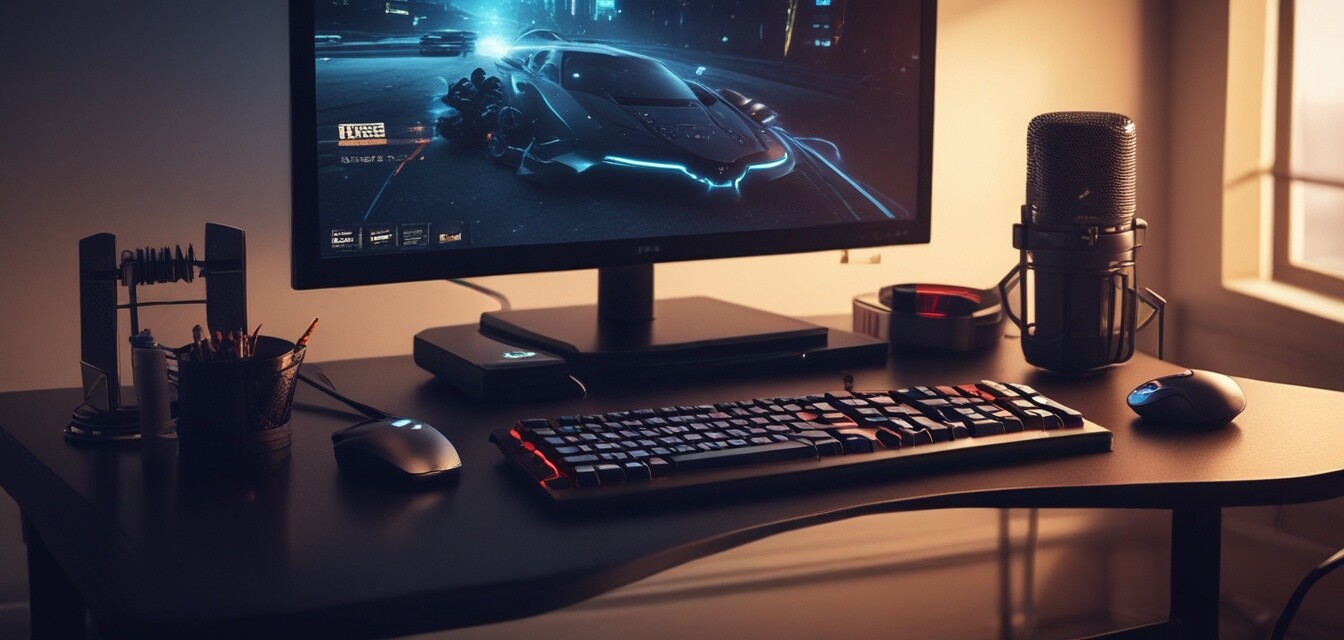
Adapting your gaming setup for streaming
Key Takeaways
- Invest in a quality webcam and microphone for better streaming quality.
- Ensure your hardware can handle gameplay and streaming simultaneously.
- Utilize streaming software that suits your needs.
- Enhance your setup with proper lighting and ergonomics.
- Consider bandwidth and internet connection quality for smooth streaming.
Streaming has become an essential part of gaming culture, and many gamers are looking to showcase their skills to a wider audience. Adapting your gaming setup for streaming is crucial to maintain gameplay quality while delivering engaging content. In this guide, we will explore practical advice on modifying your gaming environment to maximize the streaming experience.
1. Assess Your Current Setup
Before diving into upgrades, it's important to assess your current gaming setup. Identify your hardware components and software capabilities to determine what areas need improvement. Consider the following:
- Computer specifications: CPU, GPU, RAM.
- Audio and video input devices.
- Existing peripherals.
- Network connection speed.
2. Hardware Upgrades
For a seamless streaming experience, ensure that your hardware can handle both gameplay and streaming tasks. Here are some essential upgrades you should consider:
| Component | Recommended Specifications |
|---|---|
| CPU | Quad-core (or higher) |
| GPU | Dedicated graphics card with streaming capabilities |
| RAM | 16GB or more |
| Storage | SSD for faster load times |
3. Investing in Quality Streaming Equipment
The right equipment can significantly enhance your streaming quality. Consider the following:
- Webcam: Aim for at least 1080p resolution.
- Microphone: A good quality USB microphone is essential for clear audio.
- Lighting: Utilize softbox lights or ring lights to enhance video quality.
- Capture Card: If streaming console games, a capture card can greatly improve performance.
4. Choosing the Right Streaming Software
Selecting the right streaming software is critical for a successful streaming experience. Some popular options include:
- OBS Studio - Free and highly customizable.
- Streamlabs - User-friendly with integrated features for alerts and overlays.
- XSplit - A paid option that offers more advanced features.
5. Optimize Your Internet Connection
Your internet connection quality can significantly affect your streaming experience. Here are some tips to enhance your bandwidth:
- Use a wired connection instead of Wi-Fi for stability.
- Test your internet speed regularly to ensure it meets the requirements for streaming.
- Limit background bandwidth usage by closing unnecessary applications on your network.
6. Ergonomics and Stream Layout
Creating a comfortable streaming environment is vital for long sessions. Here are some ergonomic tips:
- Invest in a good gaming chair to support your posture.
- Arrange your monitor at eye level to avoid strain.
- Use a desk with ample space for all equipment.
7. Final Touches: Personalizing Your Stream
Adding personal touches to your stream can make it more engaging. Consider customizing:
- Stream overlays to match your branding.
- Alert sounds for donations, subscriptions, and follows.
- Engaging visuals like animated transitions.
Conclusion
Adapting your gaming setup for streaming is an exciting journey that enhances both your gameplay and viewer experience. By assessing your current setup, investing in quality hardware, optimizing your internet connection, and personalizing your stream, you can create an inviting environment for both you and your audience. Remember, great streams come from not only great equipment but also from enthusiasm and connection with your viewers.
Pros
- Enhanced viewer engagement and experience.
- Improved gameplay performance with upgraded hardware.
- Opportunities for community building and interaction.
Cons
- Costs associated with upgrading equipment.
- Time investment needed for learning software.
- Potential technical difficulties during streams.
